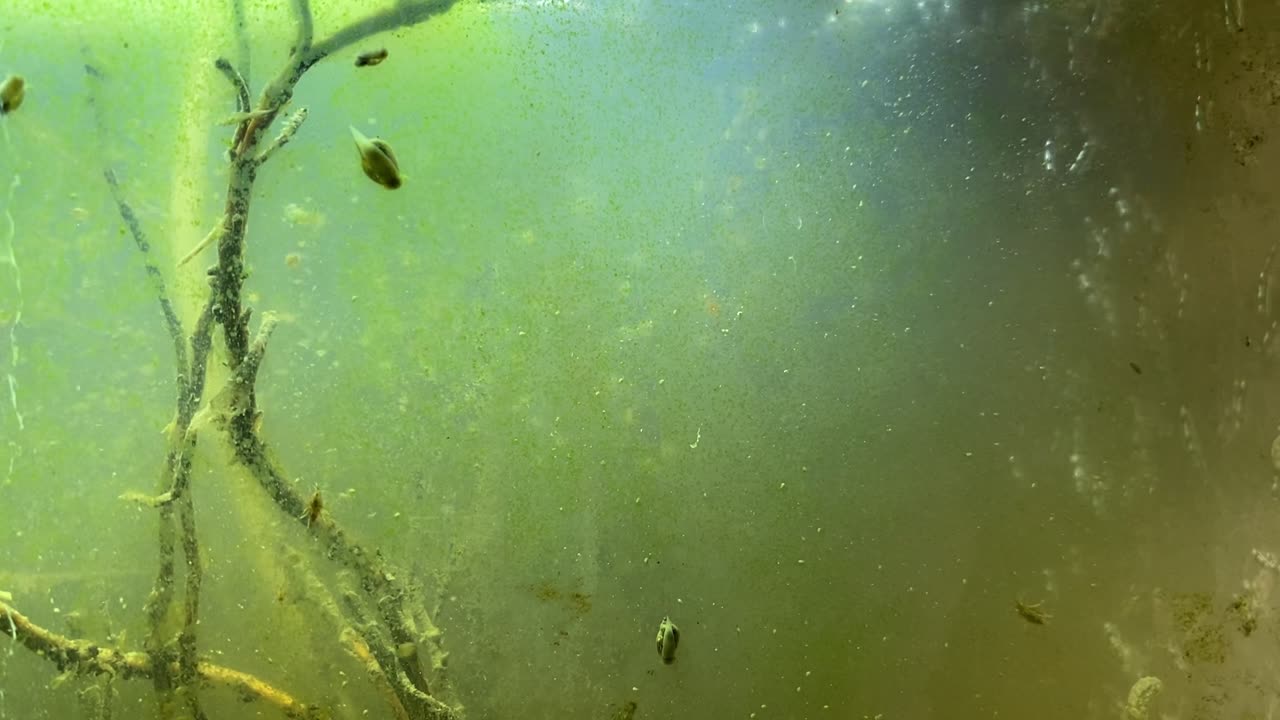Premium Only Content

Expert Reveals Top Omega 3 Rich Algae Ecosystem Production Techniques!
n the ever-evolving realm of aquariums, the emergence of live feed is becoming increasingly appreciated for its critical role in enhancing the health and growth of aquatic organisms.
Ranging from nutrient-rich delights like tubifex and water fleas to the adaptable Mexican scud, these live food sources are not just a feast for the fish; they are fundamental components of both ecosystems and aquaculture practices. With their remarkable protein and omega-3 content, live feeds also champion sustainable, closed-loop production methods, making them the superheroes of the aquatic fish diet. This article delves into the types, benefits, and production of live feed, illuminating its critical importance in nurturing vibrant aquatic environments.
What is Live feed?
Live feed, in all its glory, pertains to the clever use of live organisms, particularly aquatic invertebrates, to nourish fish and other aquatic creatures in aquaculture systems.
These little critters are not merely snacks; they’re vital players in the wild’s aquatic food chain, bolstering the overall health of the ecosystem and biodiversity. By serving as protein-packed feed sources, they significantly enhance fish nutrition and growth rates, thereby championing sustainable practices in aquaculture.
Through the marvels of closed-loop production systems, we can incorporate species such as Hyalella Azteca, tubifex, and water fleas, ensuring that nutrient cycling and resource management are as efficient as a well-oiled machine.
In essence, live feed has become a critical ingredient in the recipe for modern fish culture, where sustainability meets nutritional excellence.
The Importance of Live Feed in Aquariums
Live feed is nothing short of the unsung hero in aquariums and aquaponics, serving as a vital source of nutrients that fosters the growth and health of aquatic organisms, from fish to shrimp, across various aquaculture systems.
By embracing live feed, aquaculturists can not only enhance feed conversion ratios but also elevate color and meat quality, all while maintaining the delicate ecological balance and optimizing resource efficiency. This approach significantly reduces the environmental footprint typically associated with traditional feed sources like fishmeal.
Furthermore, the inclusion of live organisms, such as aquatic invertebrates, adds a delightful twist to dietary supplements and awakens hunting instinct, transforming fish keeping into a more natural ecosystem. This strategy not only bolsters the sustainability of farming practices but also champions aquatic biodiversity with a flair.
After all, who wouldn’t want to throw a little party for the fish while being kind to Mother Earth and all its inhabitants?
Benefits for Aquatic Organisms
The advantages of live feed for aquatic organisms are nothing short of impressive, providing a treasure trove of nutritional benefits that significantly boost natural behavior, growth rates, colors, health, and overall vitality. This is particularly true given the abundant omega-3 fatty acids found in delightful specimens like Mexican scud and water fleas which feed on various algae species—who knew dinner could be so nutritious?
Moreover, live feed serves as a powerful ally in developing robust immune systems while enhancing the metabolic performance of diverse aquatic species. High-protein options such as cyclops and brine shrimp elegantly complement this nutritional feast, ensuring younger fish transition smoothly from the simplicity of yolk sac nutrition to the complexities of a full-blown buffet.
This delicious menu offers essential components necessary for tissue regeneration and the physiological transformations that occur during critical growth stages. Consequently, embracing live feed in aquariums not only maximizes color potential but also cultivates resilient populations, ultimately championing the sustainability of aquatic-keeping practices and bolstering the environmental health of our beloved aquatic habitats.
Role in Ecosystems:
Continue Reading:
https://unimother.de/a/blog/vlog/algae-ecosystem-protein-omega-3-closed-looped-live-feed-production-tubifex-water-fleas-mexican-scud-
Join our Journey to Recycle Organic Waste out of Every Home
https://unimother.de/
-
 9:49
9:49
Tundra Tactical
5 hours ago $0.40 earnedThe Best Tundra Clips from 2024 Part 1.
32.3K5 -
 1:05:19
1:05:19
Sarah Westall
5 hours agoDying to Be Thin: Ozempic & Obesity, Shedding Massive Weight Safely Using GLP-1 Receptors, Dr. Kazer
39.7K9 -
 54:38
54:38
LFA TV
1 day agoThe Resistance Is Gone | Trumpet Daily 12.26.24 7PM EST
30.7K6 -
 58:14
58:14
theDaily302
14 hours agoThe Daily 302- Tim Ballard
36.3K1 -
 13:22
13:22
Stephen Gardner
8 hours ago🔥You'll NEVER Believe what Trump wants NOW!!
86.5K218 -
 54:56
54:56
Digital Social Hour
1 day ago $1.35 earnedDOGE, Deep State, Drones & Charlie Kirk | Donald Trump Jr.
46.1K4 -
 DVR
DVR
The Trish Regan Show
9 hours agoTrump‘s FCC Targets Disney CEO Bob Iger Over ABC News Alleged Misconduct
52.5K35 -
 1:48:19
1:48:19
The Quartering
10 hours agoElon Calls White People Dumb, Vivek Calls American's Lazy & Why Modern Christmas Movies Suck!
135K104 -
 2:08:42
2:08:42
The Dilley Show
11 hours ago $4.38 earnedH1B Visa Debate, Culture and More! w/Author Brenden Dilley 12/26/2024
117K27 -
 4:55:59
4:55:59
LumpyPotatoX2
13 hours agoThirsty Thursday on BOX Day - #RumbleGaming
110K5